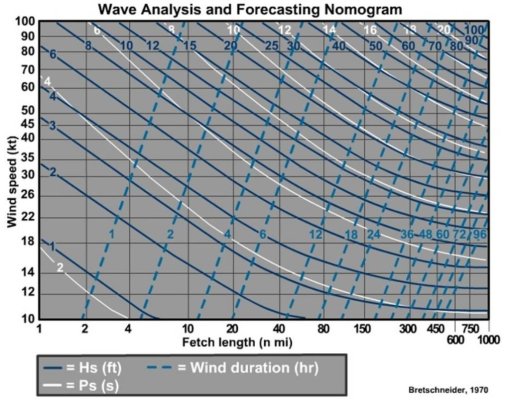All very good and salient comments. A big factor (at least with me) is psychological. How much margin for error do you want to have in your boat?
We never intentionally have gone out in bad weather or nasty sea conditions. Planning for weather is one thing, and any prudent mariner should do it. For me the question is more, what do you unintentionally get caught in?
Most of the time one can reasonably plan around the weather and sea conditions. Most of the time. Here in New England, sea conditions and weather can change very quickly and often unpredictably.
Out my window there are many days when I see the water go from glass smooth to 4-6 ft whitecaps in less than an hour. Some days Buzzard's Bay is calm and placid, other days not so much. The problem is, it can happen on the same day. Or the same boat trip.
Then there's the Block Island Sound Washing Machine. Some days you could row to Block Island in a $99 inflatable from Ocean State Job Lot. Other times the ferry ride is tortuous enough to make the strongest stomachs heave everything they've eaten for the past 5 years.
Truth be told, in 52 years of boating (gawd I'm old!)(ugly too), the number of times I've been caught off guard by a surprise change in weather and sea conditions, I could probably count on one hand (maybe two). But the psychological value of that can't be easily calculated: how much is one willing to pay for the additional capability if that happens to you?
For me, the highest priority is seakeeping ability. It's not the only priority, but the highest one, in this and most previous boat searches. I want to know that I would give up long before the boat will. Memories of those few times when something nasty caught us, though few in number, are outsized in my (and especially my wife's) minds. I don't need, want, or can afford a true 'bluewater' boat capable of crossing oceans. But for me it's worth the trade-off of spending more and/or getting less in other areas in exchange for a little more reassurance than if (or when...) that happens again, I won't have to seriously be concerned whether or not we'll make it home.


